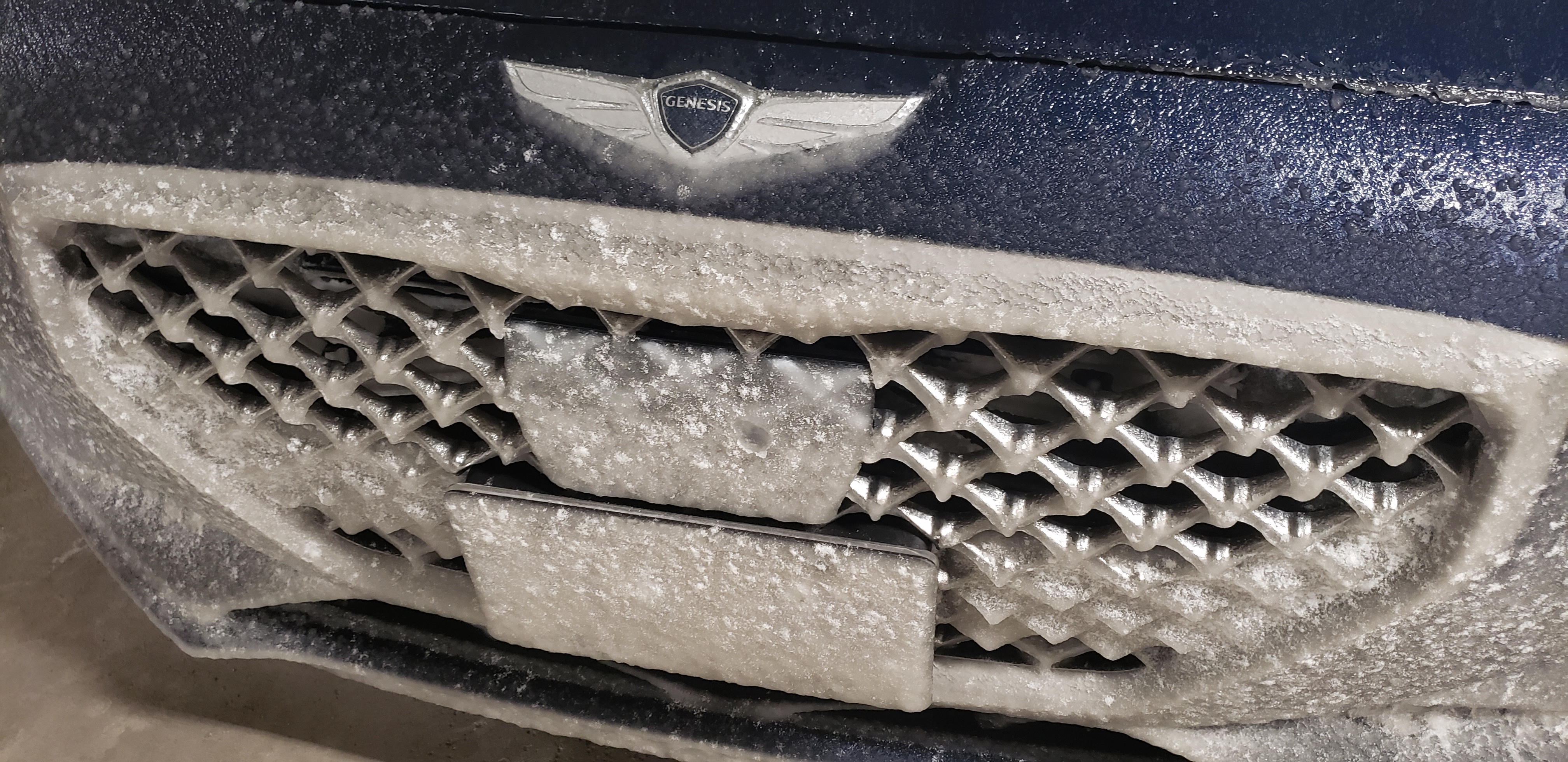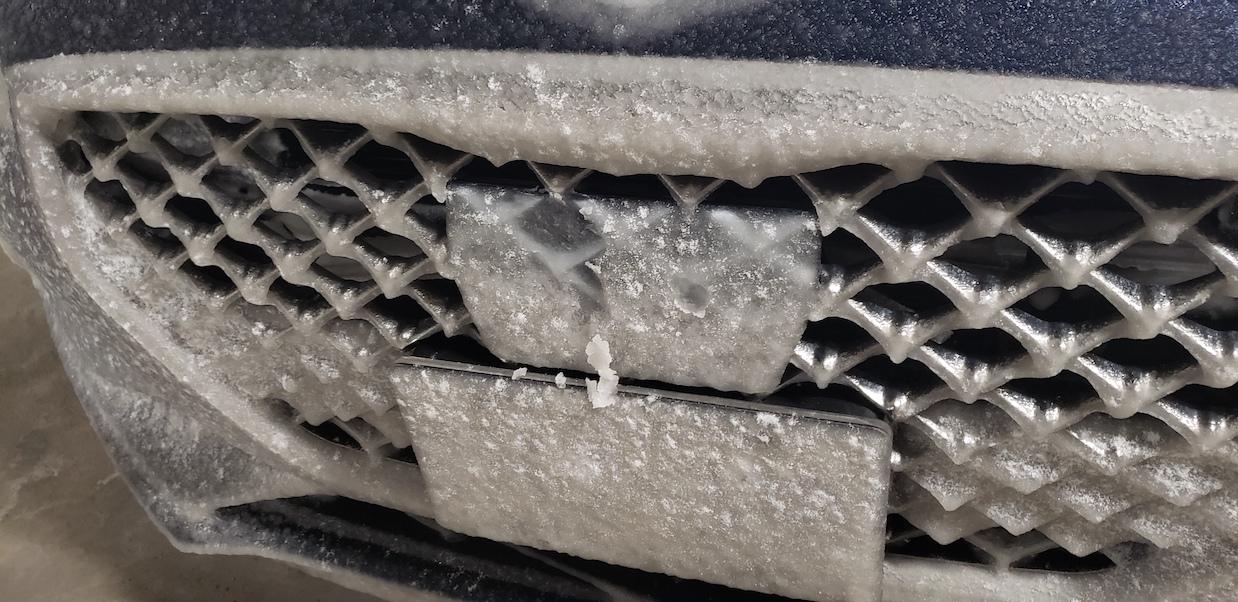Self-Driving ‘Edge’ Cases Aren’t All That Edgy
This is the front of my car after driving for about 20 minutes on the road in average weather conditions on the 401 between Toronto and Waterloo in December 2020.
The sludge is so thick you can’t even easily scrape it off with your finger, so tiny little wipers won’t work, no matter how cute they are.
This was not an uncommon storm. The weather was perfect for sticky sleet (that’s a kind of very wet snow for you California dwellers). Your post office talks about it, look it up :]. I call out California but it’s a larger problem in Tech and in AVML as well. We propose a solution, then we get it working on the easy case, and then we stop.
We say that ‘extreme weather’ will need to be dealt with, of course it will, one day. But it never happens. This is a problem for ever getting AI solutions out into the real world.

And because the real world has many challenging situations like this that are rare enough to seem like edge cases, but frequent enough to completely invalidate the “autonomous” nature of the system.
Robot vacuums are another example. They one part of a broad activity automate with the human user filling in the gaps of unsticking the robot, stopping it from eating a rug or stray sheet of paper.
So how will we move forward?
I don’t know what the solution is but it has to start with address the reality of the situation. The variety of weather conditions autonomous and semi-autonomous vehicles need to face to be minimally viable is way beyond the usual test set. We need better datasets for these varied conditions to even start determining how we can build systems to work in these conditions.
Don’t worry…we’re working on it.

